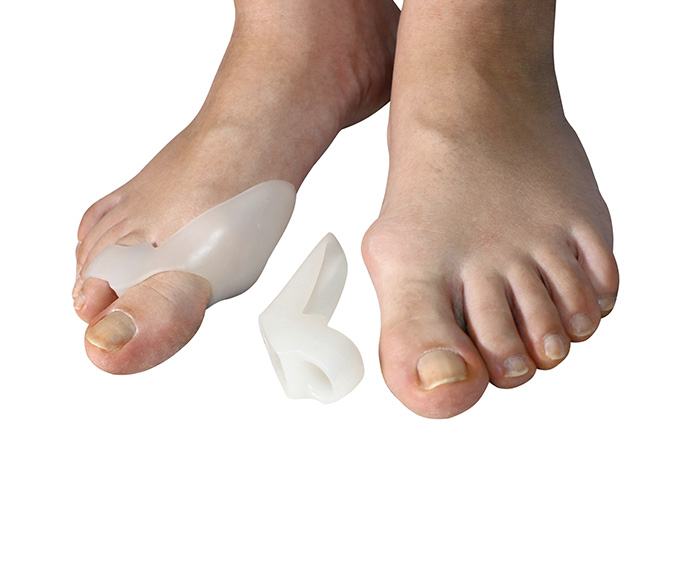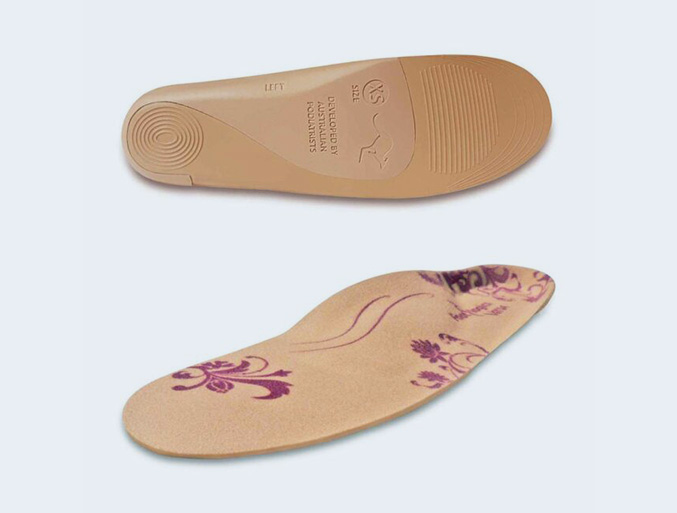Shoe inserts for bunions are designed to provide relief and support for individuals dealing with this common foot condition. Bunions are characterized by a bony protrusion at the base of the big toe, which can lead to discomfort, pain, and difficulty finding comfortable footwear.
With over 15 years of experience, we take pride in being a reputable choice known for providing reliable and long-lasting bunion inserts. Our commitment to quality has made Footlogics synonymous with trusted and durable solutions for bunions..
A bunion is a bony bump that forms on the joint at the base of the big toe. It happens when the big toe pushes against the other toes, causing the joint to stick out and the toe to lean inwards. Bunions can be painful and make it hard to find comfortable shoes. They often develop due to wearing tight or ill-fitting shoes, genetics, or certain foot conditions. Bunions can also occur on the little toe joint (bunionette).
We know that each person's condition is unique, so we work closely with our customers. Our team understands their symptoms and offers tailored bunion inserts for lasting comfort. Choose Footlogics for personalized care and relief that's just right for you.
Experience effective relief for your uncomfortable bunions with Footlogics' specialised shoe inserts. Our bunion inserts not only offer comfort and support for your daily activities but also address underlying foot issues that can contribute to various health concerns. This ensures not just pain-free walking but also promotes overall well-being, allowing you to move comfortably and confidently.
Treatment will depend on the severity of your bunion and the degree of pain you experience. Early treatment is recommended to decrease risk of joint deformities.
These are nonsurgical treatments that relieve the pain and pressure of a bunion.
Wear airy and comfortable shoes with plenty of space for toes
Cushioning helps reduce pain, enabling you to continue your regular activities. Consult your doctor about taping and padding your foot to promote a natural position, relieving pain and reducing pressure on the bunion.
Ultrasound therapy or whirlpool baths provide relief from pain and inflammation.
Shoe inserts (orthotics) can be very helpful in controlling abnormal movement of the foot. This helps reduce many major symptoms and further prevents a bunion from getting worse. Some people might find relief in over-the-counter arch supports, and others may benefit from prescription orthotics.

A bunionectomy is effective in many cases and it involves:
After certain bunion procedures, the patient might resume walking right away, while in other cases, it could take a few weeks or more. Wearing suitable footwear post-recovery is crucial to avoid symptom reoccurrence.

Surgery is typically advised when a bunion is causing considerable pain and discomfort. However, it's important to note that bunionectomy, being a type of surgery, comes with its own set of risks.
These are some risks involved, therefore it is wiser to consider conservative treatment.

Bunions are quite common and often bring persistent pain and discomfort. However, Footlogics offers the right bunion insoles that can help alleviate and control foot pain while preventing further bunion growth. They provide cushioning and padding around the bunion area, reducing pressure and friction that can cause irritation. These specialized insoles help distribute weight more evenly across the foot, promoting better alignment and reducing strain on the bunion.
Selecting the ideal insoles for bunions varies according to the person seeking relief. Footlogics offers a broad selection of skillfully crafted and efficient insoles, enabling customers to discover suitable solutions for their bunions. These insoles provide precise comfort for relieving foot discomfort, allowing individuals to resume their beloved activities that may have been hindered by pain.
When choosing bunion insoles, consider factors such as arch support, cushioning, and proper fit. Look for insoles that are designed to fit comfortably in your shoes and provide targeted support where you need it most.
Whether you're on your feet all day or simply looking for ways to alleviate bunion discomfort, insoles can play a significant role in enhancing your comfort and mobility. Remember, it's always a good idea to consult with a healthcare professional or podiatrist to find the best insole option for your specific needs. With the right insoles, you can take steps towards walking comfortably and pain-free, even with bunions.
